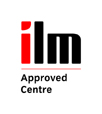Business Models for Growth
There are a number of business models you can adopt to grow your business. We have outlined details of different models below with own particular advantages and disadvantages and what will be required to ensure success.
The models you can consider are:
-
Organic growth
-
Joint Ventures
-
Franchising
-
Licensing
-
Agency
-
Distributors
Organic Growth
The growth of the company is led by the owner manager(s) of the company.
Advantages
-
Retain control of all operational matters
-
Control over recruitment policies
-
Retain all profits
-
Easy to change direction of the business
-
Control rate of growth
Disadvantages
-
All capital to be funded internally
-
Difficulty in keeping good staff
-
Profit growth constrained by capital
-
Takes longer to exploit the market
-
Requires more management input
-
Greater overhead base
Indicators for successful growth through this method:
-
Access to adequate capital resources
-
Strength in depth of management team to manage growth
-
Stable market to allow time for growth
-
Highly personal service that depends on the direct input of the owners
-
Highly technical service that would be difficult to deliver through third parties
-
Niche market with limited demand
Joint Ventures
A joint venture is a partnership between two or more businesses with a common business aim. The partners would decide who would contribute the required capital, human resources and the management skills that the business would require.
In most cases the joint venture is controlled by a shareholders' agreement. This defines each partner's position with respect to the joint venture, in terms of capital stakes and each party's powers. It supplements the joint venture's bylaws by setting out the ownership rights of each party, approval of new shareholders and establishing exit routes in advance of any problems!
Advantages
-
Capital funded jointly with partner
-
Faster growth possible
-
Provides access to key skills lacking in the client business
-
Can provide access to a new market or customer base
-
Can provide access to new technology
Disadvantages
-
Share control of operational matters
-
Profits will be shared
-
Creates dependency on partner
-
Difficult to disentangle in the event of a disagreement
-
Can require compromise on business objectives
-
Risk of training competitors
Indicators for successful growth through this method:
-
Identification of a need for additional management skills/technology
-
Businesses that could run the client's product/service alongside its own
-
Management team that operate on basis of consensus
-
Direct approaches already received from third parties
Franchising
Business format franchising is the replication of a proven business in exchange for an up front payment plus on-going management service fees for an agreed period of time. In essence it is a technique whereby the client business allows (and teaches) a third party to legally copy their business.
Advantages
-
Capital is provided by the franchisee
-
Faster growth possible
-
Fewer staff need to be employed
-
Unit operated by highly-motivated owners
-
Enlarged network enables national customers to be serviced
-
Greater return on capital
Disadvantages
-
Loss of direct control
-
Profits will be shared
-
Risk of poor franchisee selection
-
Difficulty in effective communication
-
Brand development entrusted to third parties
Indicators for successful growth through this method:
-
Business managed without direct involvement in detail
-
Existing multi-branch network
-
Sufficient development capital to run a pilot operation (could be £50,000)
-
Margins are high enough to share with franchisees
-
Knowledge easily transferable to a third party yet there is a strong reason for the franchisee to need the continued input of the client company
-
Identifiable Brand or trademark
Licensing
Licensing is a growth strategy that allows the client company to generate a revenue stream from a product or service that is manufactured or delivered by a third party. Typically the client will register the patent on the product or any service marks on the service and will provide only limited training and little on-going support.
Advantages
-
No capital requirement
-
Revenue stream generated
-
Fewer staff need to be employed
-
No on-going management resource needed
-
Greater return on capital
Disadvantages
-
Loss of most forms of control
-
Profits will accrue mainly to the licensee
-
Risk of licensee not marketing the product
-
Lack of adequate communication channels
-
No brand development
Indicators for successful growth through this method:
-
Manufacturer with overseas enquiries
-
Company with by-products that are non-core
-
Low technology processes/services that have no need for intensive training or back up support and no business format
-
Product/service with short-term potential
Agency
An agent negotiates with customers on behalf of his/her principal, in this case the client company. The agent is able to bind the company to create a legal agreement between the client and the agent's customer. The agent receives a commission usually based on the sales value of orders obtained.
Advantages
-
No capital requirement
-
Revenue stream generated externally without tying up management time
-
Fewer employed sales staff needed
-
Lower overheads
-
Payments based on success only
-
Benefit from local knowledge of agent
Disadvantages
-
Risk of being bound in poor deals
-
Agents are usually non-exclusive: they may concentrate on high commission products from other principals
-
No brand development
-
Lack of adequate communication channels
-
Complex EU regulations introduced in 1994
-
Potential to train competitors by giving them access to customer base
Indicators for successful growth through this method:
-
Lack of internal sales experience
-
New, untried product
-
Need to enter new market without any direct experience/contacts
-
Products/consumables with little Brand value
Distributors/Dealerships
A distributor buys goods on its own account from a supplier and resells them to customers. It is the distributor that has the sale contract with the customer not the supplier.
Advantages
-
No capital requirement
-
Allows client to concentrate on core skills of manufacturing, R&D, product development etc, rather than retail sales
-
Fewer customers, minimum order quantities
-
Benefit from local knowledge of distributor
Disadvantages
-
No control over prices
-
Distributors supply many products: they may concentrate on high commission products from other competing suppliers
-
No brand development
-
Lack of adequate communication channels
Indicators for successful growth through this method:
-
Company wants to expand with minimum risk
-
Sales not dependent on Brand perception or image
-
Lack of development capital
-
Product new to market
-
Lack of access to end-users of product
Information supplied by the Create Project.
Our business coaches are here to help. Find out more about our business coaching services or email us at [email protected] to arrange a chat with one of our coaches.





